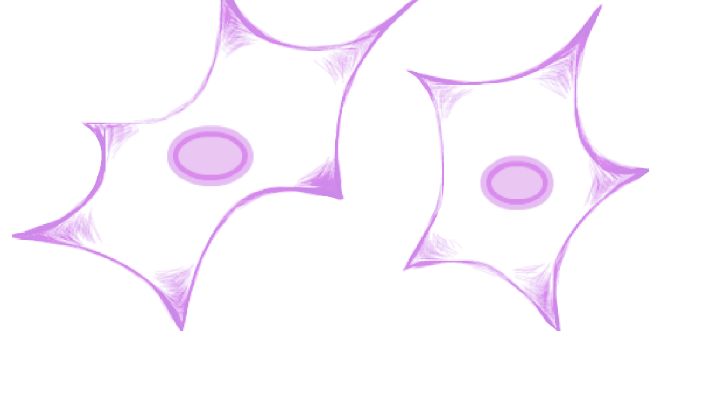Cell Senescence Entries for PTK2
- Cell Types
- Lung cancer
- Cell Lines
- A549, H1299, H460
- Cancer Cell?
- Yes
- Method
- Knockdown
- Type of senescence
- Unclear
- Senescence Effect
- Inhibits
- Primary Reference
- Chuang et al. (2020) Inhibition of FAK Signaling Elicits Lamin A/C-Associated Nuclear Deformity and Cellular Senescence. Front Oncol 9(2)22 (PubMed)
PTK2 Gene Information
- HGNC symbol
- PTK2
- Aliases
- FADK; FAK; FAK1; PPP1R71
- Common name
- protein tyrosine kinase 2
- Entrez Id
- 5747
- Description
- This gene encodes a cytoplasmic protein tyrosine kinase which is found concentrated in the focal adhesions that form between cells growing in the presence of extracellular matrix constituents. The encoded protein is a member of the FAK subfamily of protein tyrosine kinases but lacks significant sequence similarity to kinases from other subfamilies. Activation of this gene may be an important early step in cell growth and intracellular signal transduction pathways triggered in response to certain neural peptides or to cell interactions with the extracellular matrix. Several transcript variants encoding different isoforms have been found for this gene. [provided by RefSeq, Jun 2017].
PTK2 Ontologies
- Gene Ontology
-
Process: GO:6468; protein phosphorylation
GO:16310; phosphorylation
GO:43066; negative regulation of apoptotic process
GO:1934; positive regulation of protein phosphorylation
GO:7229; integrin-mediated signaling pathway
GO:1525; angiogenesis
GO:8284; positive regulation of cell population proliferation
GO:45087; innate immune response
GO:42127; regulation of cell population proliferation
GO:46777; protein autophosphorylation
GO:51897; positive regulation of protein kinase B signaling
GO:30154; cell differentiation
GO:1890; placenta development
GO:38007; netrin-activated signaling pathway
GO:30335; positive regulation of cell migration
GO:51493; regulation of cytoskeleton organization
GO:7172; signal complex assembly
GO:8360; regulation of cell shape
GO:43087; regulation of GTPase activity
GO:7179; transforming growth factor beta receptor signaling pathway
GO:7411; axon guidance
GO:90303; positive regulation of wound healing
GO:60396; growth hormone receptor signaling pathway
GO:33628; regulation of cell adhesion mediated by integrin
GO:38096; Fc-gamma receptor signaling pathway involved in phagocytosis
GO:7173; epidermal growth factor receptor signaling pathway
GO:45860; positive regulation of protein kinase activity
GO:1932; regulation of protein phosphorylation
GO:30010; establishment of cell polarity
GO:7169; transmembrane receptor protein tyrosine kinase signaling pathway
GO:35995; detection of muscle stretch
GO:16477; cell migration
GO:3007; heart morphogenesis
GO:14068; positive regulation of phosphatidylinositol 3-kinase signaling
GO:48013; ephrin receptor signaling pathway
GO:51893; regulation of focal adhesion assembly
GO:48870; cell motility
GO:30155; regulation of cell adhesion
GO:2000060; positive regulation of ubiquitin-dependent protein catabolic process
GO:10632; regulation of epithelial cell migration
GO:18108; peptidyl-tyrosine phosphorylation
GO:43552; positive regulation of phosphatidylinositol 3-kinase activity
GO:22408; negative regulation of cell-cell adhesion
GO:10763; positive regulation of fibroblast migration
GO:2000811; negative regulation of anoikis
GO:48010; vascular endothelial growth factor receptor signaling pathway
GO:10759; positive regulation of macrophage chemotaxis
GO:120041; positive regulation of macrophage proliferation
GO:10594; regulation of endothelial cell migration
GO:45667; regulation of osteoblast differentiation
GO:1900024; regulation of substrate adhesion-dependent cell spreading
GO:51128; regulation of cellular component organization
GO:50896; response to stimulus
GO:1902531; regulation of intracellular signal transduction
GO:65008; regulation of biological quality
GO:51239; regulation of multicellular organismal process
Cellular component: GO:5634; nucleus
GO:5737; cytoplasm
GO:16020; membrane
GO:43231; intracellular membrane-bounded organelle
GO:5829; cytosol
GO:5886; plasma membrane
GO:5856; cytoskeleton
GO:5925; focal adhesion
GO:30054; cell junction
GO:42995; cell projection
GO:5938; cell cortex
GO:5815; microtubule organizing center
GO:36064; ciliary basal body
GO:31234; extrinsic component of cytoplasmic side of plasma membrane
GO:1725; stress fiber
GO:43197; dendritic spine
Hide GO termsFunction: GO:5515; protein binding
GO:166; nucleotide binding
GO:4672; protein kinase activity
GO:4712; protein serine/threonine/tyrosine kinase activity
GO:5524; ATP binding
GO:16301; kinase activity
GO:16740; transferase activity
GO:4713; protein tyrosine kinase activity
GO:4715; non-membrane spanning protein tyrosine kinase activity
GO:5102; signaling receptor binding
GO:19901; protein kinase binding
GO:42169; SH2 domain binding
GO:19903; protein phosphatase binding
GO:3779; actin binding
GO:5178; integrin binding
GO:8432; JUN kinase binding
Homologs of PTK2 in Model Organisms
In other databases
- GenAge human genes
- This gene is present as PTK2
External links
- OMIM
- 600758
- Ensembl
- ENSG00000169398
- Entrez Gene
- 5747
- UniGene
- 395482
- 1000 Genomes
- 1000 Genomes
- HPRD
- GenAtlas
- PTK2
- GeneCards
- PTK2
